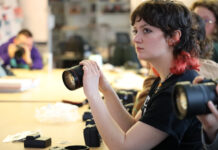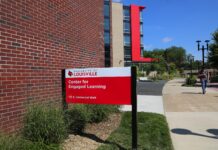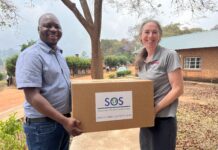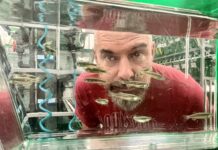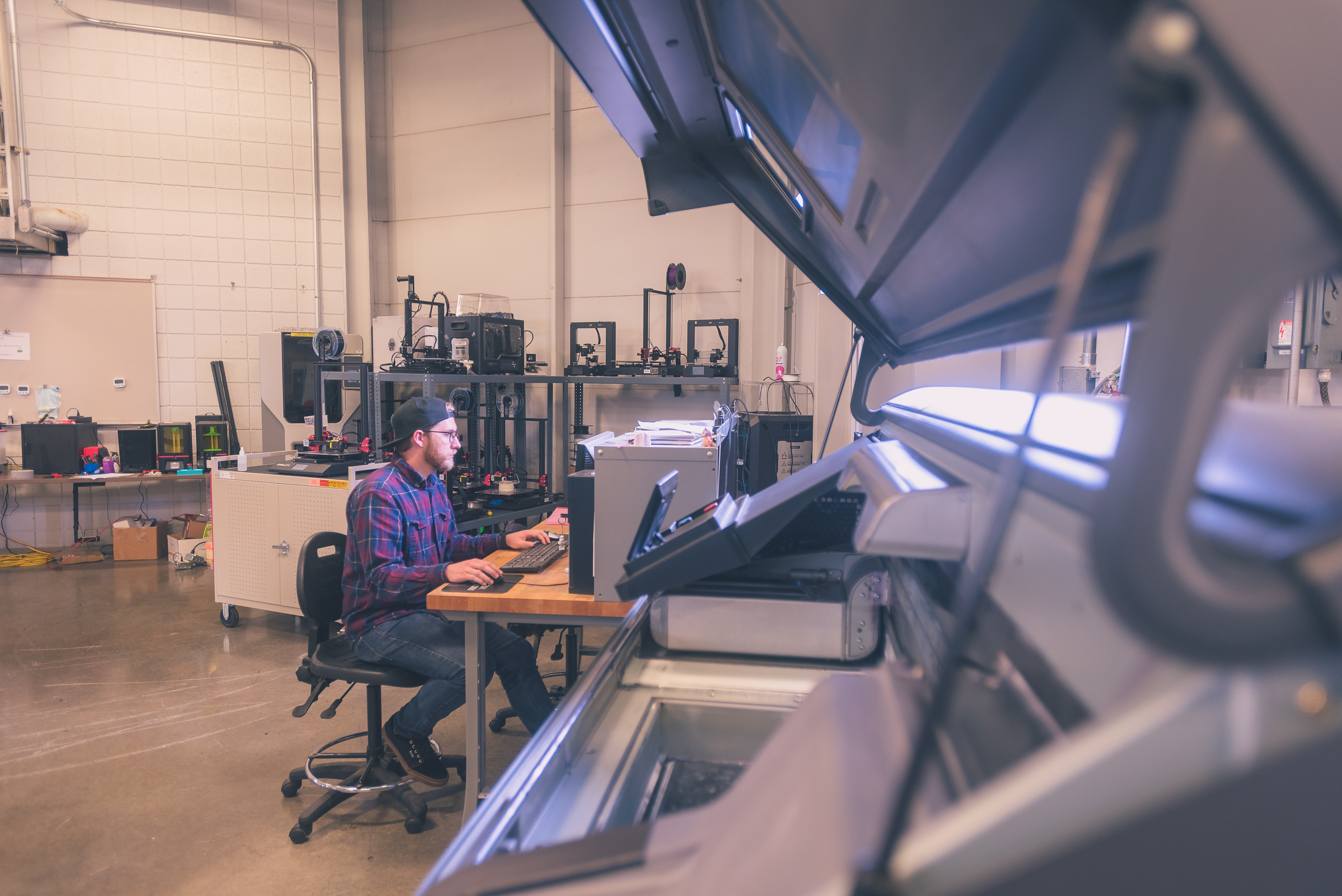The interventional radiologists at UofL had a problem. The need for spinal taps had increased, but the ability to carry out the procedures remained limited. Spinal taps, or lumbar punctures, allow physicians to obtain a small amount of cerebrospinal fluid for testing. The procedure can be carried out at the bedside, but given a dime-sized target, which can be reduced by arthritis and complicated by obesity, bedside procedures often are unsuccessful. Done under X-ray by an interventional radiologist, the procedure often is much more straightforward, but the X-ray suite is a bottleneck in the hospital.
To alleviate this bottleneck, Bryan Glaenzer and Rian Holayter, assistant professors of interventional radiology at UofL, performed the first ultrasound and X-ray-guided lumbar puncture at the university. Ultrasound units are more portable and plentiful in the hospital, allowing spinal taps to be carried out successfully in nearly any hospital setting. This newer technique demands specific skills, however, so many physicians need additional training to use it. Glaenzer and Holayter needed a simulated spine to train them.
“We use ultrasound and fluoroscopy all day long and we could train other attendings and residents if we had a phantom for them to practice on,” Glaenzer said.
The solution came from INTERFACE, a pathway connecting medical professionals at the UofL Health Sciences Center with Speed School of Engineering faculty and students who have expertise in 3D printing at the Additive Manufacturing Institute for Science and Technology (AMIST).
Through INTERFACE, Glaenzer could print a practice spine.
INTERFACE is the brainchild of Gerald Grant, professor in the School of Dentistry and associate director of AMIST, and Ed Tackett, director of engineering solutions and industrial relations in the Speed School of Engineering. They envisioned the program as a collaborative space for UofL’s dental, medical and engineering schools in the design and fabrication of medical and dental devices.
Grant, Tackett and undergraduate engineering student Justin Gillham worked with Glaenzer to refine his concept. Then Gillham created a three-dimensional design for a device dubbed the “spine box,” a life-size, 3D printed segment of spine surrounded by ballistics gel, a medium used to mimic the properties of tissue.
“We can train other physicians using this spine box to hone the technique so the first time somebody does a lumbar puncture by ultrasound guidance they will be steady at it, they will know what it’s going to look like and know all the landmarks,” Glaenzer said.
Bridging the gap
The spine box is one example of how INTERFACE helps medical or dental professionals solve problems with help from engineering students and 3D printing.
Grant and Tackett have a wealth of experience in prototype modeling projects and 3D printing, so they can help idea generators like Glaenzer bypass some of the wheel-spinning of not knowing where to turn to execute their projects and can provide learning experience for engineering students as well.
“We have a lot of engineers interested in getting into the medical and dental field because of the digital technologies being used there. We have physicians and dentists and other health care workers who want to use engineering technology to design things,” Grant said. “The idea here was to put a program together where either side can say, ‘Hey, I have this great idea to develop.’”
Once they receive an idea, Tackett and Grant build a team to design the product and meet with the idea generator. The two provide expert input and an engineering student takes the project back to the design lab to further develop the idea and create a 3D printable file. With feedback from the team, the design is refined and optimized for 3D printing.
With a final design, which can take just a few weeks to prepare, a prototype can be printed on one of AMIST’s array of 3D printers using plastic resin or metal materials. The result is a proof of concept for the idea generators, allowing them to decide whether to move forward with the project, as well as a valuable opportunity for the engineering student.
“I really enjoy doing these projects. It feels like it could be work that really helps people,” said Gillham, also a co-op student at AMIST. “One thing I’ve gotten really good at is design. I think that the opportunities I’ve been given to work on these projects have developed my skills a lot more than students who didn’t have these opportunities.”
Since its start in late 2019, the INTERFACE team has worked on several dental and medical products, including 3D printed coronavirus test swabs developed to meet a need by local health care providers. Gillham created the digital design for the swab and refined it dozens of times in response to feedback from health professionals and others before the final product was completed.
“We could change the design and try something totally different one day and come back to another one if it didn’t work. The speed of it was really awesome,” Gillham said.
Bringing ideas to life
Sundar Atre, director of AMIST, said the fast turnaround of 3D design and printing makes it a game changer for industry and engineers and demands education that allows engineering students to learn in that environment.
“In the past, you had five or even 10 years to come up with a new product,” Atre said. “Now, because anything you draw on the computer can be printed immediately, the hats the engineers have to wear are not only designing but fabricating and troubleshooting. How do we prepare them for that future?”
The answer may lie in real-world projects like the ones INTERFACE brings to the students.
The INTERFACE concept is not limited to medical applications. It could be a pathway to develop ideas from students or staff in engineering, art, business or anywhere ideas arise. On the flip side, an artist or dentist could provide insight to make a product appealing and easy to use.
“If you leave it up to an engineer, it will work but it’s going to be square or round,” Tackett said. “I’ve developed medical devices for companies and the way the handle is designed is very important. A mechanical engineer has no idea what that is, but a dental resident knows what that is. Then the artist can make it look the way that someone wants to buy it.”
Ultimately, Tackett and Grant plan to create a network of univer-sity resources to help inventors take the next steps – whether it is obtaining grant funding for further development, protecting the intellectual property with a patent or even developing a spinoff business opportunity.
“We are trying to create a pathway for those ideas that are marketable. We do a proof of concept and if it looks very promising, we could connect them with other resources within the university to help them move it forward,” Tackett said.
Not every project with value has marketable potential, however. As in Glaenzer’s spine box, INTERFACE can help create one-off training tools or a device tailored for an individual patient.
“We know who we need to bring to the table. We can very quickly put together an ad hoc multidisciplinary team to execute a project,” Tackett said. “We can actually make that device exactly the way you want.”






